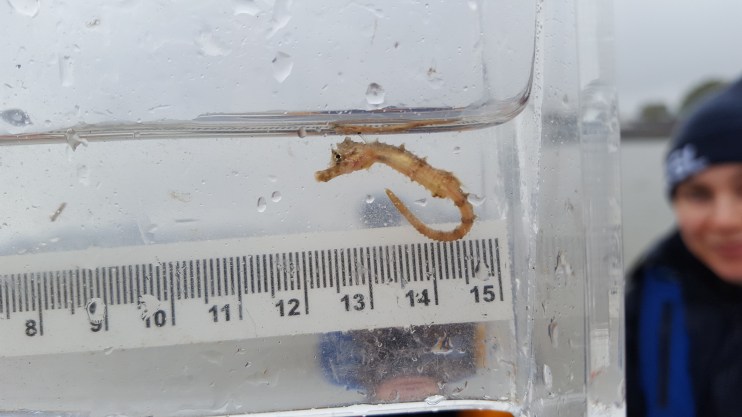Sharks and seahorses discovered in the Thames

Scientists have found seahorses and sharks living in the Thames in the first complete health check of the waterway.
The Zoological Society of London (ZSL) carried out the most comprehensive analysis of the waterway since it was declared biologically dead in 1957.
Scientists discovered conservation efforts had led to an increase in a range of bird species and marine mammals.
Unexpected residents of the river include seahorses, eels, seals and even sharks, including tope, starry smooth hound and spurdo.
Researchers said they were worried as both rising water temperature and levels posed a threat to the estaurary’s wildlife.
The first ever State of the Thames report found that climate change had increased the river’s temperature 0.2⁰C per year on average.
Sea level at Silvertown has risen 4.26mm per year on average since 1990.
ZSL conservation programme lead for wetland ecosystem recovery, Alison Debney said: “Estuaries are one of our neglected and threatened ecosystems. They provide us with clean water, protection from flooding, and are an important nursery for fish and other wildlife.
“The Thames estuary and it’s associated ‘blue carbon’ habitats are critically important in our fight to mitigate climate change and build a strong and resilient future for nature and people.

A long-term increase in nitrate concentrations is also threatening the wildlife in the waterway.
Industrial and sewage effluent have been identified as the main source of nitrate in London waterbodies, according to the Environment Agency.
Liz Wood-Griffiths, head of consents at Tideway said: “This report comes at a critical time and highlights the urgent need for the Thames Tideway Tunnel, known as London’s new super sewer.”
The sewer is due to be complete in 2025 and is designed to capture more than 95 per cent of the sewage spills that enter the River from London’s Victorian sewer system.
“It will have a significant impact on the water quality, making it a much healthier environment for wildlife to survive and flourish,” Wood-Griffiths added.
Another threat to the waterway is plastic pollution, with one mound of wet wipes in Barnes increasing 1.4 metres in height since 2014 and covering 1,000 sq metres.